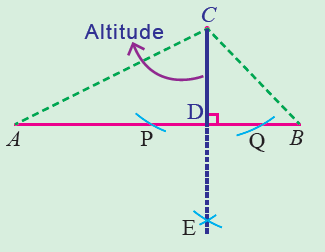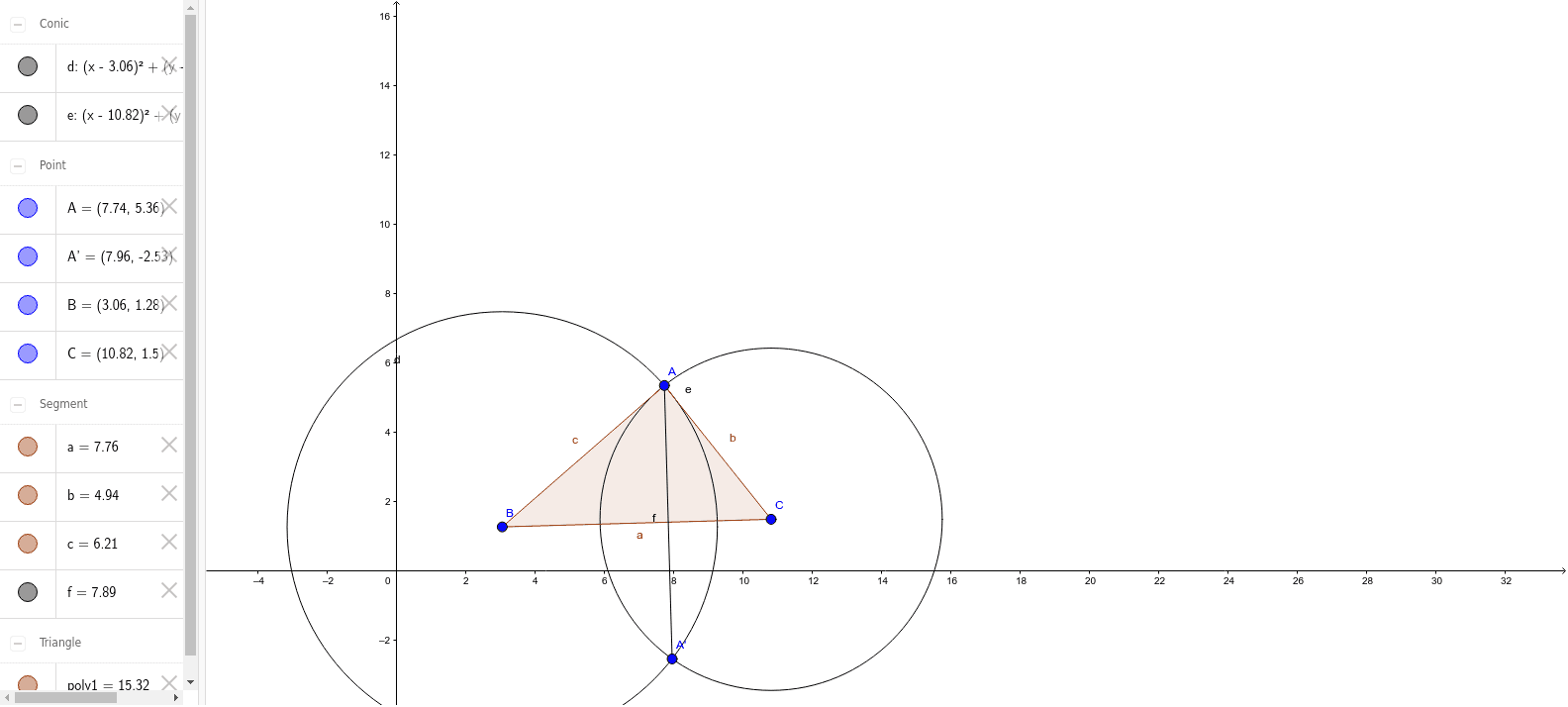

To do this construction, we would swing an arc from that point, and then from each of these endpoints we would swing two more arcs and then we would connect these and we would have our perpendicular segment, so that’s what we’re going to do. So an idea of what we’re going to do here is to think of the vertex B as some point in space and we have this opposite side AC. So we’re starting at B and we’re going to some point D on this opposite side. So if I look at this triangle right here, we’re being asked to construct altitude BD, so that tells you the vertex that you’re going to. So in construction remember you’re only using two things a compass and a straightedge, but what is an altitude? Well we said our definition of an altitude is a perpendicular segment from a vertex to the line containing the opposite side. Below is a link to the proposition and my construction.You’re probably going to be asked to construct an altitude in a triangle.

The other methods are simpler I just thought I'd post this because it's purely geometrical. Because as the first line is to the third, so is the figure on the first to the similarly described figure on the second, the equilateral described on the mean proportional contains the desired area. I do not understand trigonometry very well because I am not very well educated, but this is Euclid's approach to the problem which is general for generating similar figures of any kind of a given area, which, although perhaps cumbersome, I found convenient and readily intelligible.Īn equilateral triangle is made, a parallelogram constructed equal to it, another equal to the desired area applied alongside it in the parallels, then a mean proportional taken between the lengths of the two parallelograms. Thank you to all you brilliant mathematicians for your ingenious methods on this topic. Then draw the parallel to AB through H and intersect it with AD (at point K) to cut off the correct side length (AK) of equilateral triangle. The construction of the geometric mean is made easier by extending line CD to E so that P is the midpoint of EC, then using ED as diameter of a circle and taking $g=|PG|$ for PG a perpendicular to CD with G on the circle. The equilateral triangle whose "height" measured along line PCD (from P) is $g$ has the same area as the given triangle.
#Construct altitude geometry Pc
Find a length $g$ equal to the geometric mean of PC and PD, and take a point H on PD with PH = $g$. On one of the sides, say AB, build an equilateral triangle ABD. The savings is in re-using one side of ABC as the base of the equilateral triangle, and in using a non-perpendicular line to measure altitude, and allowing the semicircle construction of geometric mean to be applied. Here is a relatively efficient construction using a geometric mean. Something like a geometric mean is unavoidable since the problem is a quadratic equation for the side length of the equilateral triangle. The fewer steps the better I found I had to use the geometric mean construction and I wonder whether this step might be avoidable.


 0 kommentar(er)
0 kommentar(er)
